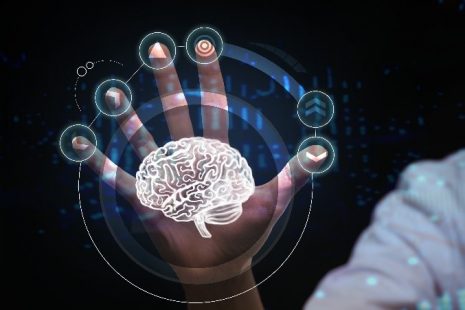The Patient Journey, Part 3: Medical Monitoring
In 1887 British physiologist Augustus Desiré Waller repurposed a desktop-sized capillary electrometer for use as the world’s first functional electrocardiogram (ECG or EKG) device. Over a century later, a major consumer device manufacturer has received U.S. Food and Drug Administration clearance as a class 2 medical device, making it the first consumer-oriented ECG device able to present the results directly to the consumer without first needing the review of a medical professional. It will not be the last.
Technological advancement and the ongoing reshaping of the healthcare industry are converging to give consumers the ability to monitor their personal health on their own terms. That level of patient freedom is overwhelmingly made possible by the shrinking cost of various electronic technologies that offer performance once reserved for high-end diagnostic equipment that required a patient to be physically present at a medical facility, potentially waiting for hours to have a battery of tests run.
Freeing Patients with Advancements in Continuous Monitoring
 Monitoring is crucial to understand how the body is responding to therapies to mitigate or repair the effects of a disease or other physical ailment. Devices such as wearable biosensors can are able to monitor a wide variety of data points including vital signs, step counts and body posture — all in a low-cost, easy-to-use and disposable form factor. Knowledge gleaned from analyzing a patient’s biomarkers and biosignals allows medical professionals to alter the prescribed treatment regimens as conditions within the body change.
Monitoring is crucial to understand how the body is responding to therapies to mitigate or repair the effects of a disease or other physical ailment. Devices such as wearable biosensors can are able to monitor a wide variety of data points including vital signs, step counts and body posture — all in a low-cost, easy-to-use and disposable form factor. Knowledge gleaned from analyzing a patient’s biomarkers and biosignals allows medical professionals to alter the prescribed treatment regimens as conditions within the body change.
Depending on the affliction, some patients may require near-continuous monitoring in order to maximize the potential for recovery. That meant long hospital stays in the worst scenarios. Even in better cases, patients might have to plan their daily schedule around visits to medical facilities in order to get monitoring tests completed.
But over the past few decades, there has been slow but steady progress to restoring patients’ control over their lives. Glucose monitoring technology has allowed diabetic patients to monitor their blood sugar levels wherever and whenever they need to do so. The aforementioned EKG capability of wellness tracking devices allows wearers to detect a type of irregular heart rhythm known as atrial fibrillation (AFib), yielding data that could be a matter of life or death for those with a history of heart problems.
Further advances in continuous monitoring are poised to be a game changer for the connected health ecosystem. Medical practitioners are taught the value of early notification of symptoms and providing the requisite therapies. Continuous monitoring enables patients to live a more mobile life, thanks to a plethora of enabling technologies. Flexible circuitry, low-power sensors and printed antennas allow convenient and comfortable medical monitoring hardware to be affixed to or even implanted in a patient. The monitoring hardware can in turn leverage a smartphone or other wireless Internet access as a gateway to cloud-based healthcare services where data from a patient’s health monitoring device can be stored.
New Technology Creates New Challenges
Such a patient-first future is not free from risk, however. For example, product developers will have to contend with end-to-end security challenges. From securing the supply chain to designing anti-tamper device features to defending against wireless intercepts or hacking of web-based services, there is a cost to the health care benefits of low-cost monitoring devices. Cyber and physical security must be “baked in” during the design of the devices and services associated with patient monitoring technology. Regulatory requirements such as the Health Insurance Portability and Accountability Act (HIPAA) in the United States and the European Union’s General Data Protection Regulation (GDPR) ensure companies take digital security seriously. Additional standards, like IEC 60601, has set regulations for programmable electrical medical systems (PEMSs), creating a standard for software in the medical industry. Balancing security with ease of use will undoubtedly be a challenge that device manufacturers will spend a significant amount of resources attempting to balance.
The Molex Advantage
Empowering patients to have more control over their healthcare begins with giving them the ability to monitor their own bodies. Wellness tracking wearables initiated a mass-market desire for direct-to-consumer devices that assist users in taking control of their wellness. Having seen the benefit of such technology for wellness purposes, consumers are increasingly comfortable with the notion of more robust devices that monitor medical conditions. Continuous glucose monitors (CGMs) serve as an example of that comfort level translating into increased use. CGMs, introduced in 1999, were used by 6% of Americans with type 1 diabetes in 2011, by 12% in 2014, and by 24% in 2016; the use rate rose to 38% in 2018, according to an article in the American Journal of Managed Care.
Molex has diverse experience in many technologies that are crucial to building health-monitoring devices and related services. From flexible circuitry for medical devices to developing connectivity for HIPAA-compliant data centers, we leverage our knowledge and capabilities to help deliver secure, reliable solutions for the medtech industry.